A Weekend Getaway to Kalavryta and Mount Helmos
Whether by foot, car, or the...
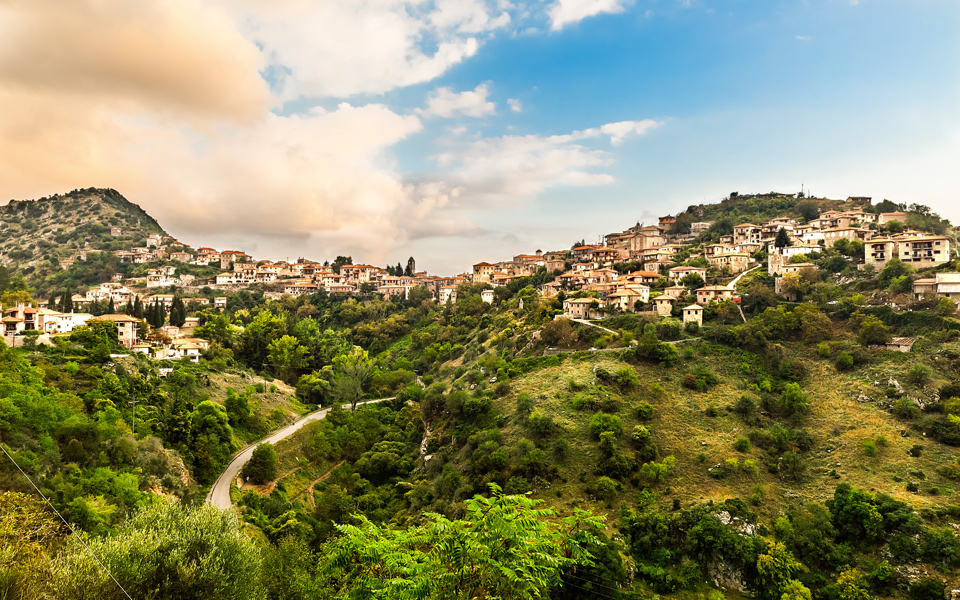
Dimitsana captures the best of Arcadia and tempts any visitor to lose themselves in its beauty
© Dionysis Kouris
The fog hovering over the gorge ascends towards Dimitsana, dimming the view of the town’s charming stone houses. The wind blowing past the rocks on either side of the Lousios Gorge entrance is the only audible sound. Visitors could well lose themselves in an imaginary world here if it weren’t for the village clock, which strikes every half hour, around the clock.
A main road lined with shops and cafes splits the town into two. This strip represents the focal point of activity – from the bakery at one end to the string of cafes at the other, and the guest house and shop selling traditional products in between. The back streets are quieter and romantic at night. Older folks typically gather at the cafes for morning coffee. The majority of people who run businesses here are relatively young. They are comprised of locals, villagers who had left but eventually returned, as well as enchanted foreigners who moved to this place, situated at the heart of Mt. Mainalo, at an altitude of 960 meters.
The overall serenity is occasionally punctured by passersby, tour buses heading for the region’s important monasteries, as well as cars equipped with extreme sports gear for recreational activity at the Lousios River.
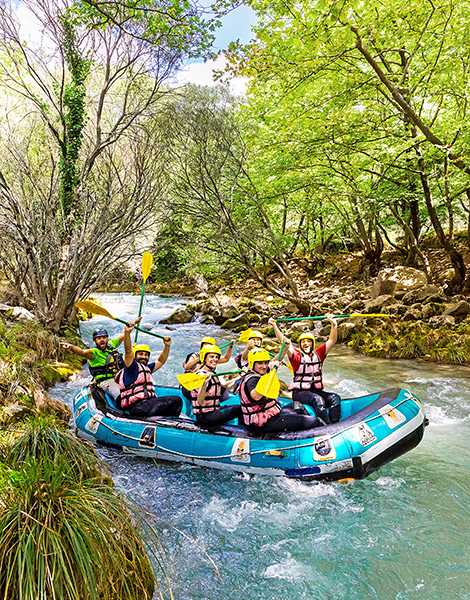
Rafting on Lousios river is a thrilling way to explore the area
© Dionysis Kouris
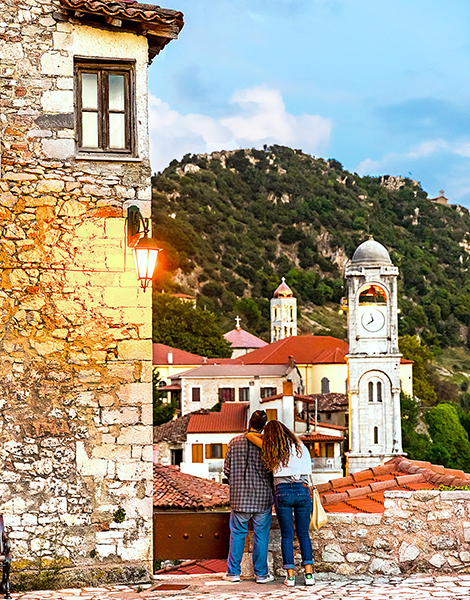
The overall serenity of Dimitsana refreshes any visitor
© Dionysis Kouris
Dimitsana brims with old stone houses. Most of these have been well maintained for residential and guesthouse purposes. In the alleys, the dark grey color of the stone of the buildings creates a striking contrast with the red-tiled roofs. The cobbled paths can prove challenging for unaccustomed visitors. Snow and fog are quite common here in the winter.
“The cold air strikes you in the face when you wake up in the morning and open the window. This feeling is a thousand times better than the strongest coffee,” said Panos, an enthusiastic frequent visitor.
Though running for the relatively short distance of 23 kilometers, the Lousios River is one of Greece’s most impressive. Its waters are impetuous, often plummeting as small and larger waterfalls. .
In the summer, visitors do not hesitate to take the daring plunge into the river’s cold waters.
Rafting adventures are preferred during all other seasons. The ruins of Gortyna, an ancient city, are located next to the river. This area may be reached by taking the asphalt road slightly past Dimitsana, towards Stemnitsa. The ruins of this significant Arcadian ancient city, as well as its ancient baths, come into view once across the bridge over the Lousios River.
The Open-Air Water Power Museum, maintained on the outskirts of Dimitsana, is a key attraction. This thematic museum focuses on the importance of hydraulic power in traditional societies. Up until the mid-20th century, around twenty fulling tubs, where woven woolen fabrics were washed, operated in the Dimitsana area. The museum’s displays seek to recreate such activities, as well as others related to the area’s traditional flour mill, tannery and distillery production. Launched in 1997, the museum is open daily 10:00-17:00 (except Tuesdays).
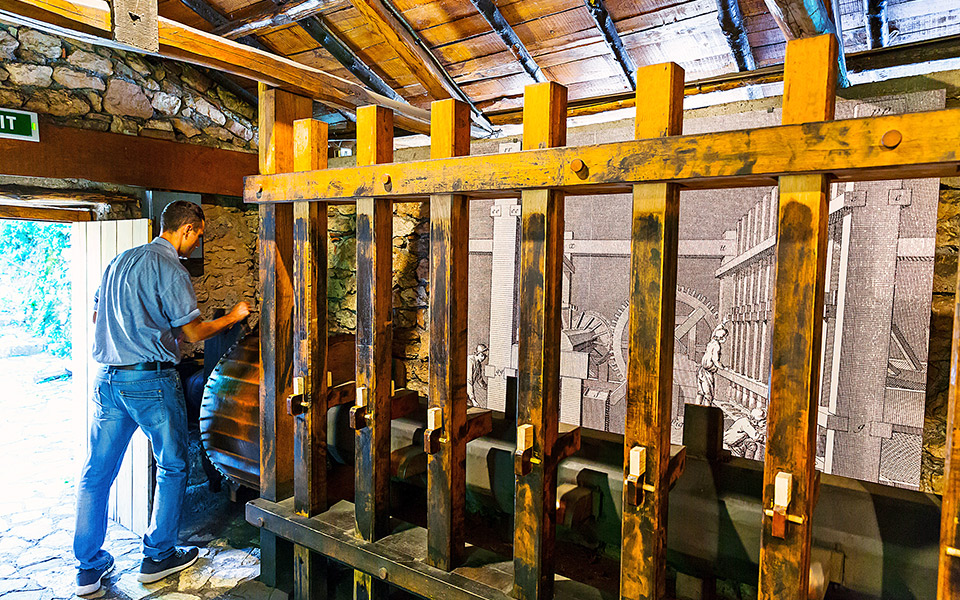
The Open-Air Water Power Museum
© Dionysis Kouris
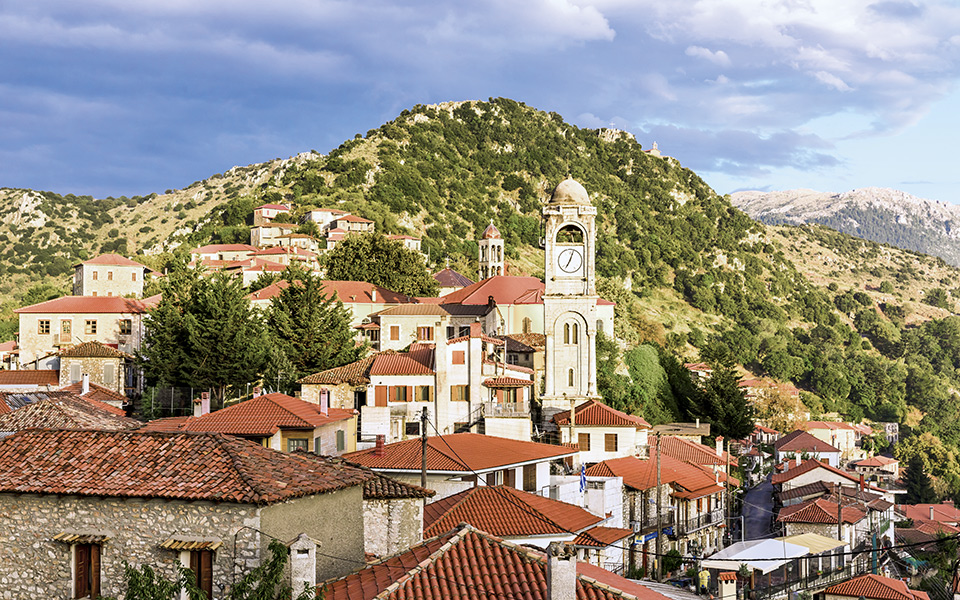
Dimitsana's village clock strikes every half hour around the clock
© Dionysis Kouris
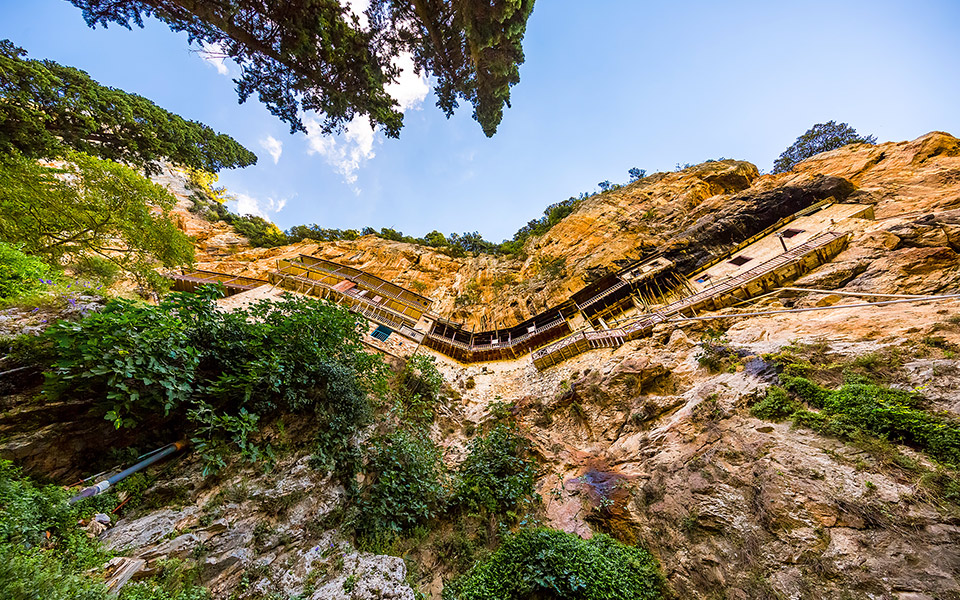
The impressive monastery of Prodromos clinging to a rock face
© Dionysis Kouris
Tourists typically visit Dimitsana’s shops selling traditional products such as homemade noodles (hilopites) and marmalades, and also visit the two monasteries; Filosofos – founded in 963, it is Arcadia’s oldest – and Prodromos, both religious attractions built on the slopes above the Lousios river.
A half-hour trek along a trail beginning from the Prodromos Monastery leads – once past the gorge opposite the Filosofos monastery – to the so-called secret school (kryfo scholio), which was operated covertly by the Greek Orthodox church during Ottoman Rule.
Numerous patriarchs and priests hail from the region. The family houses of prominent figures of the Greek Revolution in 1821, the martyr Patriarch Grigorios the 5th and the Metropolitan Paleon Patron Germanos are both located in the Dimitsana area. So, too, are those of various revolutionaries, including general Theodoros Kolokotronis, the pre-eminent leader of the Greek Revolution, who was from Libovisi, a little further up Mt. Mainalo.
The people of Dimitsana were mostly exempted from the battlefronts so they could focus on producing ammunition for the struggle that was, distributed throughout the Peloponnese.
Pages ripped out of precious books and manuscripts from the Dimitsana library and school were used, along with local gunpowder, to make bullets. Even so, rare manuscripts and a rich collection of books survived and are maintained at the library.
Dimitsana, located 203 kilometers from Athens, is roughly a 2½ hour drive from the city. Take the Athens-Tripoli highway and, once through the Artemisio tunnel, turn right for Vitina, drive past this village and then follow the road signs to Dimitsana. The return trip costs roughly €60 for fuel and road tolls.
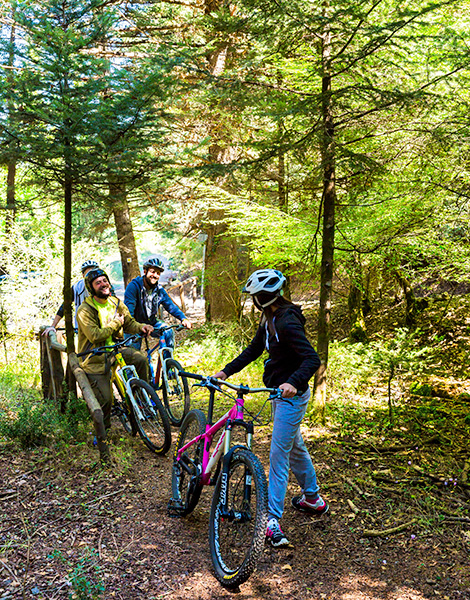
The surrounding forested slopes of Mt. Mainalo are perfect for cycling tours and nature lovers.
© Dionysis Kouris
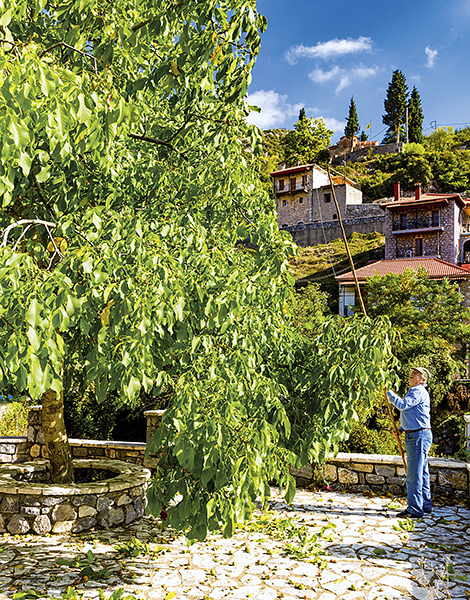
Vitina is a great spot for shopping local products such as handmade marmalades, honey and fresh herbs.
© Dionysis Kouris
Vitina, the region’s largest village, is the most developed in terms of tourism. On good days, its square is bathed in splendid sunlight. A side street below sells a variety of traditional products, including pasta, lavender, fir tree honey and fresh oregano. The surrounding forested slopes of Mt. Mainalo are perfect for trekking and nature lovers. Large hotels and luxury chalets operate around Vitina, while local tavernas offer traditional food. This is a great spot for shopping fresh local products.
Established in 1870, Gerousia (tel. +30 27950.81253), a café at the square, serves top-grade Greek coffee, herbal tea, tsipouro spirit, ouzo, assorted meze dishes and homemade sweets, including galaktoboureko (semolina custard pastry) and orange pie. Stroll around to marvel at the traditional architecture of the village houses.
The historic arched bridge of Karitena, depicted on one side of the 5,000 drachma bill – Greece’s pre-euro currency – , is estimated to have been built in the 13th century. Three of the structure’s five original arches remain. Quite miraculously, a pint-sized church exists amid one of the pillars supporting the bridge. A new cement bridge was built over the old structure in the 1950s.
The Vager hotel(tel. +30 27960.22073, www.hotelvager.gr) in Levidi offers an incredibly vast view, homemade breakfast and atmospheric rooms. Quad rides in the mountain range, an unforgettable experience, are also offered here.
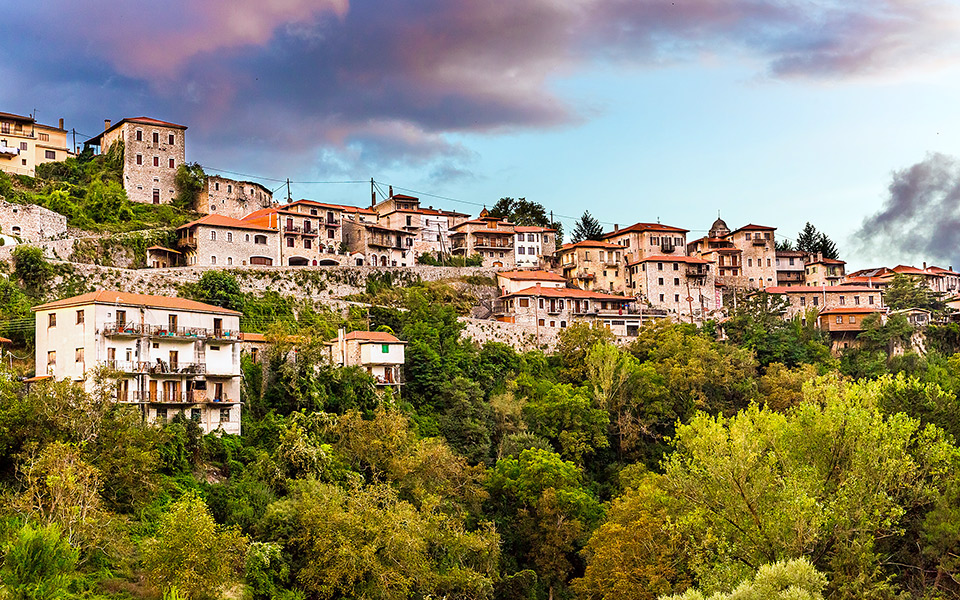
Picturesque Karitena
© Dionysis Kouris
The village square is surrounded by stone houses and mansions. A listed settlement, Alonistena figured prominently in the 1821 Greek Revolution. Built on a forested plateau of Mt. Mainalo, at an altitude of 1,220 meters, it is the ideal location for a one-day excursion over traditional roads to take in the fresh air amid fir trees.
An enormous book at the village entrance lists all the names of the locals who fought alongside Kolokotronis, the Greek Revolution leader. A pit-stop for coffee here makes for a sublime experience.
Located at an altitude of 1,200 meters, over a gorge, this village is like a giant terrace offering a view of the fir forest and the slopes of Mt. Mainalo. The weather remains cool here even in the summer. In recent years, Valtesiniko has become an increasingly popular weekend getaway destination.
Visiting Zerzova (tel. +30 27950.31753), a taverna operating at this small village, is like taking a step back in time. Its menu includes dishes such as rooster lasagna, wild boar with cognac, hilopites(noodles) with mizithra cheese, veal in red sauce and homemade green pie. Most of the items are produced in-house. Open Fri-Sun only.
A tiny village, Psari is located quite a long way away from the bigger villages. Arkadiani (tel. +3027910.27161), a multi-purpose spot housing a café, restaurant and workshop for traditional products including pasta, sweet preserves and pasteli (sesame and honey) bars, is the key attraction for the few locals. A museum displaying old kitchen utensils and precious old-recipe manuscripts is also maintained here.
Whether by foot, car, or the...
In the castle town of Monemvasia,...
Discover five mountain destinations where crisp...
This recipe comes from Germanos Christianopoulos,...